- Understanding Smart Rings: Current Market and Statistics
- Trends in Wearable App Development
- Why Focus on Smart Ring Health Apps?
- How Does a Smart Ring App Work?
- Must-Have Features in a Smart Ring Health App
- 6 Steps for Smart Ring Health App Development
- Business Models for Your Smart Ring Health App
- Essential Tech Stack for Your Smart Ring Health App
- Regulations And Compliance Requirements For Smart Ring Health App
- Factors to Consider While Choosing a Smart Ring Health App Developer
- Technological Integrations in Smart Ring Health App Development
- Use Cases of Smart Ring Health App Development
- Case Study: Women’s Health Smart Ring
- Wrapping Up
- How Can Idea Usher Help You in Smart Ring Health App Development?
- FAQs
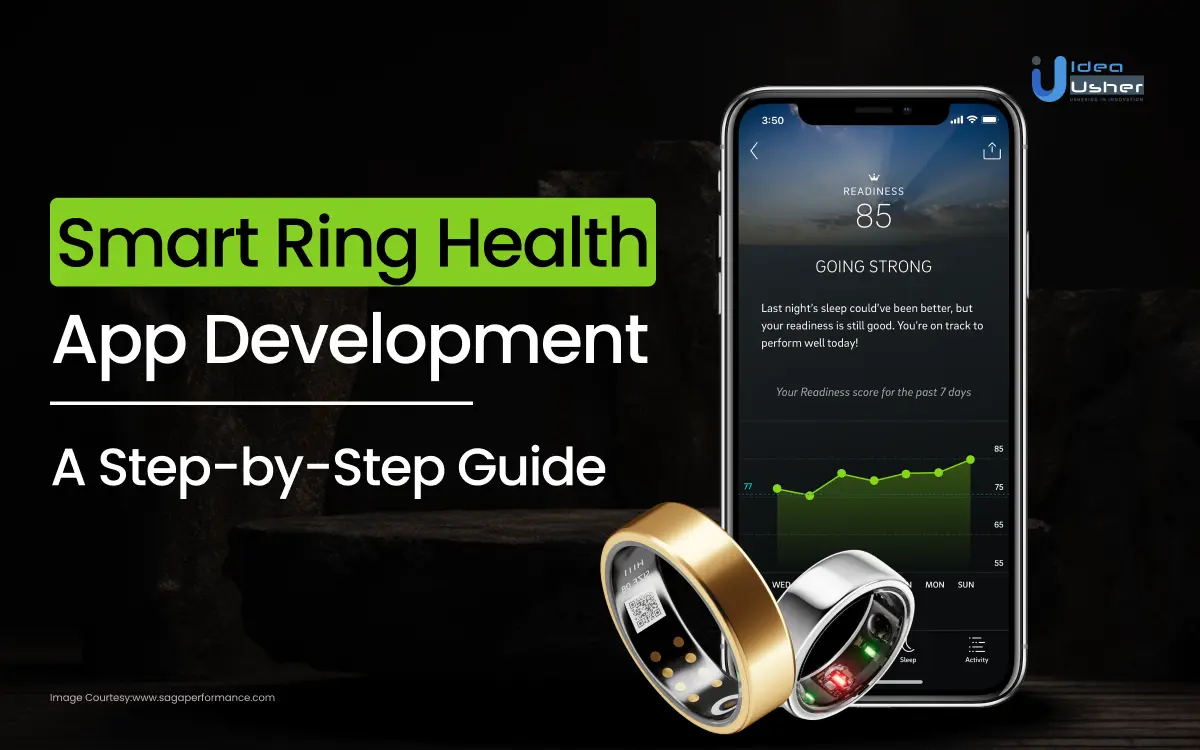
Wondering how Smart Ring Health App Development could revolutionize the healthcare domain?
The healthcare industry is undergoing a dramatic shift, moving from reactive treatment to proactive prevention. Wearable technology like smart rings plays a crucial role in this transformation, empowering individuals to take control of their health and well-being.
As more people become health-conscious, the demand for personalized, accessible, and accurate health tracking devices is on the rise. Smart rings, with their blend of fashion and functionality, are perfectly poised to meet this demand.
But for savvy entrepreneurs, this trend isn’t just about personal well-being; it’s a lucrative market opportunity. Developing a user-friendly, data-driven smart ring health app could be the next billion dollar business idea. Let’s explore how you can tap into it.
- Understanding Smart Rings: Current Market and Statistics
- Trends in Wearable App Development
- Why Focus on Smart Ring Health Apps?
- How Does a Smart Ring App Work?
- Must-Have Features in a Smart Ring Health App
- 6 Steps for Smart Ring Health App Development
- Business Models for Your Smart Ring Health App
- Essential Tech Stack for Your Smart Ring Health App
- Regulations And Compliance Requirements For Smart Ring Health App
- Factors to Consider While Choosing a Smart Ring Health App Developer
- Technological Integrations in Smart Ring Health App Development
- Use Cases of Smart Ring Health App Development
- Case Study: Women’s Health Smart Ring
- Wrapping Up
- How Can Idea Usher Help You in Smart Ring Health App Development?
- FAQs
Understanding Smart Rings: Current Market and Statistics
When it comes to wearable technology, smart rings have emerged as a compact and convenient device that seamlessly integrates into our daily lives. But what exactly are smart rings, and how do they work?
Smart rings are wearable electronic devices designed to be worn on a finger. They are equipped with sensors and chips that allow them to connect to your smartphone via Bluetooth. This connectivity enables the smart ring to sync data with your phone and provide real-time updates on various metrics.
Another significant functionality of smart rings is contactless payments. With NFC (Near Field Communication) technology, smart rings can be used to make payments at POS terminals, making transactions quick and hassle-free.
Smart rings also offer remote control capabilities. They can be used to control smart home devices, answer calls, send pre-set texts, and even play music on your smartphone.
Moreover, smart rings are increasingly being used for sleep monitoring. They can track your sleep patterns and provide data on your sleep quality, duration, and disturbances.
Top Smart Rings in the Market
RingConn: Known for its sleek design and robust functionality, RingConn offers features like fitness tracking, sleep monitoring, and contactless payments.
Ultrahuman Ring: This smart ring stands out for its advanced health tracking features, including heart rate monitoring and SpO2 tracking.
Ōura Ring 3: Ōura Ring 3 is renowned for its sleep tracking capabilities. It provides detailed insights into your sleep stages, helping you improve your sleep quality.
Wellue O2ring: Wellue O2ring is a medical-grade ring that offers continuous oxygen monitoring, making it a great choice for those with specific health conditions.
ORII: ORII takes a unique approach by turning your finger into a smartphone. You can make calls, send texts, and even use voice assistants with this smart ring.
Sleepon Go2Sleep: As the name suggests, this smart ring focuses on sleep monitoring, providing comprehensive reports on your sleep health.
Prevention Circul Plus: This smart ring offers continuous heart rate and SpO2 monitoring, along with fitness tracking features.
Arcx: Arcx is a smart ring that doubles as a joystick, allowing you to control your smartphone or other devices with simple finger movements.
Ultrahuman Ring AIR: This smart ring offers advanced health tracking features, including heart rate variability (HRV) tracking and sleep monitoring.
Wearable Devices Market
The global wearable technology market was valued at USD 61.30 billion in 2022.
It is expected to expand at a CAGR of 14.6% from 2023 to 2030.
In terms of demographics, 40 percent of survey respondents in the age group of 35 to 54 years in the United States have wearable devices like smartwatches and activity trackers.
North America dominated the market with a revenue share of 40.7% in 2022.
Smart Rings Market
- The global smart rings market size was USD 20 million in 2022.
- It is projected to touch 197.03 Million by 2031, exhibiting a CAGR of 28.9% during the forecast period.
These statistics clearly indicate that the market for wearable devices and smart rings is booming. The variety and capabilities of the smart rings we’ve discussed are a testament to the rapid innovation and growing interest in this sector. As more people recognize the convenience and benefits of these compact devices, the demand for smart rings is set to soar.
However, the true potential of smart rings can only be unlocked with a streamlined app that serves as a control center for these devices. Such an app would allow users to easily access and interpret the data collected by the smart ring, customize its settings, and even integrate it with other smart devices.
For business owners and entrepreneurs, this presents a golden opportunity. Developing a user-friendly and feature-rich app for smart rings can not only fill a gap in the market but also create a new revenue stream. As the smart ring market continues to grow, so too will the demand for a comprehensive app that enhances the user experience.
Trends in Wearable App Development
Before we get deeper into smart ring health app development, it’s crucial to understand the current trends and technologies in wearable app development. This can help you better understand market gaps and how you can leverage them with your healthcare app.
1. Wider Fitness Tracking
While fitness tracking remains a core functionality, wearable tech such as smart rings are expanding their territories. These additional features include real-time stress monitoring, guiding you through personalized breathing exercises during anxious moments. Furthermore, sleep quality analysis, offering actionable insights to optimize your slumber. These are just a few examples of how apps are evolving beyond basic metrics.
2. Precise Healthcare Data
The integration of advanced sensors and bioimpedance technology is providing precision healthcare on users’ fingers. These include tracking blood oxygen levels to manage respiratory conditions, or monitoring cardiovascular health with insights into blood pressure trends. By partnering with healthcare providers, apps can even offer personalized coaching and interventions, empowering users to proactively manage their health.
3. AI and ML Integration
Artificial intelligence and machine learning can analyze the vast amounts of data collected by wearable devices and provide personalized recommendations to the users. For instance, a smart ring health app could use ML algorithms to analyze a user’s sleep patterns and provide tips for improving sleep quality.
4. Interconnectivity and Internet of Things
With interconnectivity, smart ring health apps seamlessly sync with other health platforms, wearables, and smart home devices. This creates a holistic ecosystem where data flows freely, providing a comprehensive picture of your health and well-being.
IoT allows smart rings to connect with other smart devices, creating a seamless ecosystem of interconnected devices. This connectivity can enhance the functionality of smart ring health apps. For example, a smart ring could sync with a smart thermostat to adjust the room temperature based on the user’s body temperature.
5. Remote Health Monitoring
In the healthcare sector, wearable devices and smart rings are used for remote patient monitoring and early detection of potential health issues. In the fitness industry, they’re used for tracking workouts and monitoring progress.
Why Focus on Smart Ring Health Apps?
The market for smart ring health apps is poised for explosive growth. With rising consumer demand for personalized health management and a thriving wearable tech ecosystem, this niche presents a lucrative opportunity for forward-thinking entrepreneurs. By incorporating the trends mentioned above, you can develop an app that stands out, offering invaluable health insights and user engagement on a sleek and convenient platform.
Planning Your Smart Ring Health App Product Strategy
Developing a smart ring health app is not just about coding and design; it’s also about strategic planning. A well-defined product strategy can guide your development process, help you make informed decisions, and increase your chances of success in the market.
1. Product/Market Strategy
The first step in planning your product strategy is defining your product/market strategy. This involves identifying your target market, understanding their needs and preferences, and determining how your app can meet these needs. For a smart ring health app, your target market could be health-conscious individuals, fitness enthusiasts, or people with specific health conditions.
2. Value Model
Next, you need to define your value model. This involves determining how your app will provide value to the users and how you will monetize this value. For instance, you could offer basic health tracking features for free and charge for premium features like personalized health insights or consultations with health professionals.
3. Product Development Strategy
Finally, you need to plan your product development strategy. This involves deciding on the technologies to use, the features to include, and the timeline for development and launch. Remember to consider the current trends in wearable app development and the capabilities of smart rings when planning your strategy.
Here are some tips and best practices for planning your product strategy:
- User-Centric Approach: Always keep the user at the center of your product strategy. Understand their needs, preferences, and pain points, and design your app to address these.
- Competitive Analysis: Analyze your competitors to understand their strengths and weaknesses. This can help you identify opportunities and differentiate your app in the market.
- Iterative Development: Adopt an iterative development approach. Start with a minimum viable product (MVP), gather user feedback, and then refine and expand your app based on this feedback.
- Scalability: Plan for scalability from the start. As your user base grows, your app should be able to handle the increased data and traffic without compromising on performance.
- Security and Privacy: Given the sensitive nature of health data, ensure that your app complies with all relevant data privacy regulations and uses robust security measures to protect user data.
By carefully planning your product strategy, you can develop a smart ring health app that not only meets the needs of the users but also stands out in the competitive wearable tech market.
How Does a Smart Ring App Work?
A smart ring app works in conjunction with a smart ring, a wearable electronic device designed to be worn on a finger. Here’s a step-by-step breakdown of how a smart ring app works:
1. Data Collection
The smart ring is equipped with various sensors that continuously monitor and collect data on different health metrics such as heart rate, body temperature, sleep patterns, and physical activity.
2. Data Transmission
The collected data is then transmitted to the smart ring app on the user’s smartphone via Bluetooth. This allows for real-time tracking and updates.
3. Data Analysis
The smart ring app analyzes the collected data using advanced algorithms. This can provide insights into the user’s health and fitness levels, sleep quality, stress levels, and more.
4. User Interface
The analyzed data is presented to the user through an intuitive and user-friendly interface. This can include graphs, charts, and other visualizations to make the data easy to understand.
5. Notifications and Alerts
The smart ring app can send notifications and alerts based on the analyzed data. For example, it can alert the user if their heart rate is unusually high or if they haven’t been active for a long period.
6. Personalized Insights and Recommendations
Based on the analyzed data, the smart ring app can provide personalized insights and recommendations to the user. This can help the user make informed decisions about their health and lifestyle.
7. Integration with Other Apps
The smart ring app can also integrate with other health and fitness apps, providing a comprehensive view of the user’s health.
In essence, a smart ring app acts as a bridge between the smart ring and the user, turning raw data into actionable insights.
Must-Have Features in a Smart Ring Health App
A successful smart ring health app should offer a comprehensive set of features that cater to the needs of the users and administrators. Here are some must-have features for different panels of the smart ring health platform:
Smart Ring Panel
- Essential Data Display: Heart rate, steps, sleep score, calories burned, activity intensity, stress level (if sensor available).
- Goal Progress Bars: Motivate users with visual displays of progress towards daily/weekly goals.
- Basic Actions: Start/stop tracking, switch tracking modes, receive basic notifications (vibrates, lights).
- Customizable Notifications: Choose which metrics trigger notifications and their intensity.
- Workout Mode: Track specific activities for detailed data and insights.
- Meditation Mode: Guide users through calming breathing exercises based on stress levels.
- Hydration Reminders: Gentle nudges to stay hydrated throughout the day.
- Find My Ring: Locate misplaced rings through smartphone integration.
- Battery Level Indicator: Monitor remaining battery life discreetly.
- Software Update Notifications: Stay informed about important updates and bug fixes.
- Health Tracking: Track various health metrics such as heart rate, sleep patterns, steps taken, and body temperature.
- Notifications: Provide real-time notifications for important health updates and reminders.
- Gesture Control: Allow users to control other devices or functions through gestures made with the smart ring.
- Contactless Payments: Enable users to make contactless payments using NFC technology.
- Emergency SOS: Send an emergency alert with the user’s location to predefined contacts.
- Stress Monitoring: Monitor stress levels based on heart rate variability.
- UV Exposure: Track exposure to harmful UV rays and provide sun safety advice.
Smartphone Panel
- Detailed Data Dashboards: Dive deep into each metric with historical trends, charts, and graphs.
- Personalized Insights: Actionable advice based on data, trends, and user goals.
- Sleep Reports: Comprehensive analysis of sleep quality, stages, and personalized sleep tips.
- Community & Challenges: Connect with other users, participate in challenges, and share achievements.
- Guided Workouts: Access a library of personalized workouts based on fitness level and goals.
- Wellness Library: Educational articles and resources on various health and wellness topics.
- Integrations: Connect with other health apps, wearables, and medical devices for holistic data viewing.
- AI-powered Coaching: Receive personalized recommendations and coaching based on your data and trends.
- Reward System: Earn badges, points, or discounts for consistent app usage and healthy habits.
- Integration with Other Apps: Integrate with other health and fitness apps to provide a comprehensive view of the user’s health.
- Settings Customization: Allow users to customize the settings of the smart ring, such as notification preferences and health tracking options.
- Social Sharing: Enable users to share their health stats and achievements on social media.
- Goal Setting: Allow users to set health and fitness goals and track their progress.
- Health Tips: Provide daily health and wellness tips based on the user’s health data.
- Community: Create a community where users can connect, share their experiences, and motivate each other.
- Privacy Settings: Allow users to control what data they share and with whom.
- Customer Support: Provide customer support for troubleshooting and queries.
Additionally, following modules can be included for a more comprehensive user experience:
Health Professional Module:
- Consultation Booking: Allow users to book consultations with health professionals directly through the app.
- Health Reports: Enable health professionals to access and analyze the user’s health data (with user’s consent) to provide personalized advice.
- Communication: Provide a secure channel for users and health professionals to communicate.
Marketplace Module:
- Product Listing: List related products like smart ring accessories, premium health services, or other health and fitness products.
- Shopping Cart: Allow users to add products to a cart and make purchases within the app.
- Reviews and Ratings: Enable users to review and rate products, helping others make informed decisions.
Community Module:
- Forums: Create forums where users can discuss their experiences, share tips, and support each other.
- Challenges: Host health and fitness challenges to motivate users and foster a sense of community.
- Leaderboards: Display leaderboards based on the challenges to encourage friendly competition among users.
Learning Panel:
- Educational Content: Provide educational content like articles, videos, and podcasts about health and wellness.
- Quizzes: Host quizzes based on the educational content to make learning interactive and fun.
- Progress Tracking: Allow users to track their learning progress and earn badges or rewards.
Admin Panel
- User Management: Add, edit, and manage user profiles, access levels, and data privacy settings.
- Device Management: Monitor ring performance, battery levels, troubleshoot technical issues, and remotely deactivate lost rings.
- Content Management: Update app content, educational resources, health tips, and challenge descriptions.
- Data Analytics: Gain insights into user behavior, app usage, health trends, and overall platform performance.
- Security & Privacy Dashboard: Manage user data access, control permissions, and ensure platform security compliance.
- Push Notifications: Send targeted messages to specific user groups or individuals for announcements and updates.
- Subscription Management: Manage different subscription plans, billing, and user upgrades/downgrades.
- Feedback & Support: Analyze user feedback, respond to support inquiries, and address app issues efficiently.
- Partner Integrations: Manage partnerships with healthcare providers, insurance companies, or wellness programs.
- Regulatory Compliance: Stay updated on relevant data privacy regulations and ensure app adherence.
While the core user panels covered here form the foundation of your smart ring health app, introducing innovative additional panels can set you apart in the competitive landscape. Here are some potential options and their feature sets:
Healthcare Professional Panel:
Target Audience: Doctors, nurses, and other healthcare professionals.
Features:
- Remote Patient Monitoring: Secure access to patient data, track health trends, and provide remote consultations.
- Care Plan Management: Collaborate with patients to create and manage personalized care plans.
- Data-Driven Insights: Receive actionable insights from patient data to inform diagnosis and treatment decisions.
- Secure Communication: Chat and share updates with patients securely within the platform.
- Integration with Electronic Health Records (EHRs): Seamless data exchange for comprehensive patient care.
Corporate Wellness Panel:
Target Audience: Companies and organizations seeking to improve employee health and well-being.
Features:
- Employee Data Management: Track employee health metrics, identify at-risk individuals, and monitor overall program effectiveness.
- Incentive Programs: Encourage healthy habits through gamification, challenges, and rewards.
- Personalized Wellness Coaching: Offer employees access to personalized coaching and support from health professionals.
- Group Challenges and Competitions: Foster engagement and teamwork through healthy competition among employees.
- Reporting and Analytics: Generate detailed reports on program participation, health outcomes, and ROI.
Research and Development Panel:
Target Audience: Researchers and academic institutions studying health and wellness data.
Features:
- Anonymized Data Access: Provide researchers with secure access to anonymized user data for approved research projects.
- Data Export Tools: Facilitate easy data export in various formats for analysis.
- Collaboration Platform: Connect researchers with each other and share findings within the platform.
- Ethical Review Board Integration: Ensure adherence to ethical research guidelines through built-in review processes.
- Publication Support: Assist researchers in preparing and publishing findings based on app data.
6 Steps for Smart Ring Health App Development
Developing a health app for smart rings is a unique challenge that requires a deep understanding of both wearable technology and healthcare. Here’s a detailed guide on how to approach this task:
1. Understand the Device
Before you start developing the app, it’s crucial to understand the capabilities and limitations of smart rings. Research the sensors and features available in the smart rings for which you’re developing the app. This will help you determine what health metrics you can track and what features you can offer.
2. Demographic Planning
Proceed by clearly defining your app’s core purpose and target audience. What specific health needs will it address? Who are you trying to reach? Next, conduct thorough market research to understand existing solutions and identify potential gaps.
3. Define the App’s Core Functionality
Based on your understanding of the device, define the core functionality of your app. This could be anything from tracking heart rate and sleep patterns to providing personalized fitness advice. Remember, the goal is to provide value to the user and improve their health and wellness.
4. Design the User Interface
Designing the user interface for a smart ring health app can be challenging due to limited interface. Prioritize simplicity and intuitive design. Utilize clear icons, minimal text, and gestures for easy interaction. Remember, every tap and interaction on the ring should feel seamless and purposeful.
5. Develop the App
Once you’ve defined the functionality and designed the user interface, you can start developing the app. This involves coding the app, integrating it with the smart ring’s sensors, and testing it to ensure it works as expected.
Choosing the right development platform is crucial. Popular options include Android Wear OS, iOS WatchKit, and Flutter. Consider factors like compatibility, security, and ease of use for your ring device.
6. Test the App
Testing is a crucial part of the development process. Test the app thoroughly to ensure it works correctly and provides accurate health data. This includes testing the app’s performance, usability, and compatibility with different smart rings.
Developing a health app for smart rings is no small feat, but with the right approach and a clear understanding of the device and the user’s needs, it’s a challenge that can be successfully met. As the market for smart rings continues to grow, so too will the opportunities for innovative and impactful health apps.
Business Models for Your Smart Ring Health App
Developing a smart ring health app is not just about providing value to the users; it’s also about creating a sustainable revenue stream. Here are some monetization models you can consider for your smart ring health app:
1. Subscription Model:
- Core Offering: Users pay a recurring monthly or annual fee to access the app’s full suite of features, data analysis, personalized insights, and potentially additional content.
- Pros: Predictable revenue stream, fosters long-term user engagement, allows for continuous feature updates and value addition.
- Cons: May require a strong value proposition and differentiation to justify recurring costs, can have churn if users perceive limited value.
2. Freemium Model:
- Core Features Free: Offer basic functionality for free, attracting a wider user base. Premium features, in-depth data analysis, and advanced coaching are unlocked through paid subscriptions.
- Pros: Lowers initial barrier to entry, attracts a larger user base for potential upsells, good for data collection and user behavior analysis.
- Cons: Requires careful balancing of free and paid features to incentivize upgrades, freemium users may generate less revenue per user.
3. In-App Purchases:
- Base App Free: Offer the core app for free, but charge for specific features, additional data visualizations, or personalized coaching sessions within the app.
- Pros: Flexible approach caters to diverse user needs and budgets, allows for targeted upsells based on user behavior.
- Cons: Can create user frustration if essential features are hidden behind paywalls, requires careful pricing strategy to avoid feeling nickel-and-dimey.
4. Data Insights and Partnerships:
- Aggregate and anonymize user data: Partner with healthcare providers, research institutions, or wellness companies to sell anonymized user data insights for research or product development.
- Pros: Diversifies revenue streams, leverages data without compromising user privacy, requires robust data security and user consent protocols.
- Cons: Requires building trust and navigating privacy regulations, data quality and ethical considerations are paramount.
5. Corporate Wellness Programs:
- Tailored Solutions: Partner with companies to offer customized versions of your app for their employee wellness programs, including data analysis and reporting tools.
- Pros: Lucrative partnerships with large organizations, promotes healthy habits in corporate settings, expands user base beyond individual consumers.
- Cons: Requires strong sales and marketing efforts, customization can be resource-intensive, needs to fit within existing corporate wellness initiatives.
When choosing a monetization model, it’s important to consider your target market, the value proposition of your app, and the user experience. The goal is to create a monetization model that not only generates revenue but also aligns with your brand and provides value to the users.
Essential Tech Stack for Your Smart Ring Health App
Developing a smart ring health app requires a robust tech stack that can handle the complexities of wearable technology, health data, and user experience design. Here’s a recommended tech stack for developing a smart ring health app:
1. Mobile App Development:
- Front-end Development: Consider frameworks like React Native or Flutter for cross-platform app development, ensuring wider reach and efficient development processes.
- Back-end Development: Choose scalable and secure back-end solutions like Node.js with Express.js or Python with Django, depending on your project’s specific needs and complexity.
- Cloud Infrastructure: Leverage cloud platforms like Amazon Web Services (AWS), Microsoft Azure, or Google Cloud Platform to ensure scalability, reliability, and data security.
2. Wearable Device Integration:
- Smart Ring SDKs: Utilize the official SDKs provided by smart ring manufacturers like Ōura, Ultrahuman, or McLear to ensure seamless integration and access to device data.
- Bluetooth Low Energy (BLE): Enable low-power communication between your app and the smart ring using BLE protocols, optimizing battery life and data transfer efficiency.
3. Data Management and Security:
- Database: Choose a scalable and secure database solution like PostgreSQL or MongoDB to store and manage health data, adhering to HIPAA and other relevant privacy regulations.
- Data Encryption: Implement robust data encryption at rest and in transit, protecting user privacy and complying with security standards.
- API Security: Secure all APIs used for data access and communication with strong authentication and authorization mechanisms.
4. Data Analytics and AI:
- Data Analytics Tools: Leverage tools like Apache Spark or Google Cloud Dataflow for large-scale data processing and analysis of bioimpedance, sleep, and other health data collected by the smart ring.
- Machine Learning and AI: Explore integrating machine learning models for personalized health insights, anomaly detection, and predictive analytics, empowering users with actionable information.
5. User Interface and User Experience (UI/UX):
- Design Tools: Utilize design tools like Figma or Adobe XD to create intuitive and user-friendly interfaces that cater to your target audience and specific app functionalities.
- User Experience (UX) Best Practices: Prioritize user-centered design principles, ensuring clear navigation, easy data visualization, and a seamless user journey within your app.
Remember, the choice of tech stack can significantly impact the functionality, user experience, and scalability of your app. Therefore, it’s important to choose a tech stack that aligns with your app’s requirements and your team’s expertise.
Regulations And Compliance Requirements For Smart Ring Health App
Developing a smart ring health app involves not just technical challenges but also legal ones. It’s crucial to understand and comply with the regulations in the markets where you plan to launch your app. Here are the primary regulatory requirements you will need to focus on:
United States:
In the US, health apps are subject to a variety of federal and state statutes and regulations. These include the following:
Food and Drug Administration (FDA):
The gatekeeper of medical devices in the US. Depending on your app’s functionalities and claimed health benefits, it may fall under Class I (low risk), Class II (moderate risk), or Class III (high risk) medical device regulations, requiring varying levels of premarket approvals and ongoing compliance.
Federal Trade Commission (FTC):
Enforces consumer privacy and data security regulations. Ensure your app adheres to data privacy laws like the Health Insurance Portability and Accountability Act (HIPAA) and the Children’s Online Privacy Protection Act (COPPA) if applicable.
Federal Communications Commission (FCC):
Oversees wireless technology regulations. If your ring uses Bluetooth or other wireless connections, ensure compliance with FCC standards.
HIPAA:
The Health Insurance Portability and Accountability Act of 1996 (HIPAA) governs the dissemination of protected health information (PHI) held by certain health care providers and other covered entities to their business associates, including through a mobile health application.
Beyond the US:
European Union (EU):
The Medical Device Regulation (MDR) governs medical devices in the EU. Similar to the FDA, classification determines the level of regulatory scrutiny and premarket approval pathways.
Furthermore, a health app must comply with EU laws like the General Data Protection Regulation (GDPR) and The Data Protection Law Enforcement Directive. These directives aim to protect the rights and freedoms of persons with regard to the processing of personal data and on the free movement of such data.
Canada:
Health Canada oversees medical devices. Classification again plays a role, with varying requirements for Class I (low risk), Class II (medium risk), and Class III (high risk) devices.
Moreover, Health Canada is responsible for helping Canadians maintain and improve their health. Their compliance and enforcement activities help protect against health and safety risks3.
It’s important to note that this is a high-level overview and the actual regulations can be complex and vary depending on specific circumstances. Therefore, it’s recommended to seek legal advice when developing a health app to ensure full compliance with all relevant regulations.
Additional Considerations:
- Data Privacy: Regardless of location, prioritize robust data security measures and transparent privacy policies to gain user trust and comply with evolving data privacy regulations.
- Cybersecurity: Implement robust cybersecurity measures to protect user data from breaches and unauthorized access.
- Ethical Considerations: Uphold ethical principles in data collection, use, and research, especially with sensitive health data.
By understanding and adhering to these regulations, you can build a compliant and trustworthy smart ring health app, paving the way for success in the US and potentially expanding your reach to other international markets.
Factors to Consider While Choosing a Smart Ring Health App Developer
Choosing the right developer for your smart ring health app is a crucial decision that can significantly impact the success of your project. Here are some factors to consider:
Expertise in Healthcare App Development:
- Experience with similar projects: Look for a developer with a proven track record of success in developing healthcare apps, particularly those focused on wearable tech and bioimpedance data.
- Understanding of regulatory landscape: Ensure they possess deep knowledge of relevant regulations like HIPAA, FDA guidelines, and data privacy laws specific to your target market.
- Security and privacy focus: Prioritize developers with a strong commitment to data security and user privacy, with experience implementing robust security measures.
Smart Ring Integration Expertise:
- Familiarity with leading smart ring platforms: Choose a developer well-versed in integrating with the specific smart ring platform you’ve chosen, like RingConn, Ultrahuman Ring, or Ōura Ring.
- Experience with sensor data integration: Ensure they have experience working with bioimpedance, heart rate, sleep, and other sensor data collected by smart rings.
- Understanding of low-power development: Recognize the importance of energy efficiency in battery-powered devices like smart rings and choose a developer adept at optimizing app performance for such constraints.
Additional Key Considerations:
- Communication and collaboration: Opt for a developer who fosters open communication, actively listens to your needs, and welcomes your feedback throughout the development process.
- Agile development methodology: Consider their development approach, prioritizing agile methodologies that promote flexibility and adapt to changing requirements.
- Scalability and future-proofing: Choose a developer who plans for future growth and scalability, ensuring your app can accommodate increasing user numbers and feature additions.
- Cost and budget alignment: Be transparent about your budget and ensure the developer’s pricing model aligns with your financial constraints.
By considering these factors, you can choose a developer who not only has the technical skills to build your smart ring health app, but also understands your vision and can help you achieve your business goals.
Technological Integrations in Smart Ring Health App Development
Technological integrations play a crucial role in enhancing the functionality and user experience of a smart ring health app. Here are some key hardware and software integrations that could be included in such a project:
Hardware Integrations:
- Sensors: Smart rings come equipped with various sensors like heart rate monitors, accelerometers, and temperature sensors. Integrating these sensors with the app allows for real-time health tracking.
Features: Real-time health tracking, activity recognition, sleep monitoring.
Benefits: Provides valuable health insights, helps users make informed health decisions. - NFC (Near Field Communication): NFC allows for contactless payments and data transfer.
Features: Contactless payments, data sharing.
Benefits: Enhances convenience, allows for quick and easy payments and data transfer. - Bluetooth: Bluetooth allows the smart ring to connect with the user’s smartphone and other devices.
Features: Device connectivity, data syncing.
Benefits: Allows the app to sync data with the smart ring, enhances functionality by connecting with other devices.
Software Integrations:
- Health and Fitness Apps: Integrating with other health and fitness apps can provide a more comprehensive view of the user’s health.
Features: Data aggregation, comprehensive health tracking.
Benefits: Provides a holistic view of the user’s health, allows for more accurate health insights. - AI and Machine Learning: AI and ML algorithms can analyze the health data collected by the smart ring and provide personalized insights and recommendations.
Features: Personalized health insights, predictive analytics.
Benefits: Helps users understand their health data, provides personalized health advice, can predict potential health issues. - Cloud Services: Cloud services allow for secure data storage and access from anywhere.
Features: Secure data storage, remote data access.
Benefits: Ensures data security, allows users to access their health data from anywhere. - Payment Gateways: Integrating with payment gateways allows for in-app purchases and subscriptions.
Features: In-app purchases, subscriptions.
Benefits: Provides a seamless payment experience, allows for monetization of premium features.
By carefully choosing and integrating the right technologies, you can create a smart ring health app that is not only feature-rich and user-friendly, but also innovative and ahead of the curve.
Use Cases of Smart Ring Health App Development
Smart ring health apps can be developed for a variety of niches, each with its unique requirements and benefits. Here are eight use cases where such an app can be particularly useful:
1. Women’s Health:
- Menstrual Cycle Tracking: Monitor cycle regularity, predict ovulation, and personalize fertility awareness with continuous bioimpedance data and AI-powered predictions.
- Pregnancy Monitoring: Track fetal heart rate, maternal sleep patterns, and stress levels for peace of mind and potential early detection of issues.
- Postpartum Support: Monitor sleep quality, stress levels, and recovery progress after childbirth, offering personalized guidance and connecting mothers to relevant resources.
2. Remote Patient Monitoring:
- Chronic Disease Management: Continuously monitor vitals, medication adherence, and activity levels for patients with diabetes, heart disease, or other chronic conditions, enabling timely interventions.
- Post-Surgical Recovery: Remotely monitor patients recovering from surgery, tracking vital signs, sleep patterns, and pain levels to aid faster and safer recovery.
- Mental Health Support: Monitor stress levels, sleep quality, and activity patterns remotely for individuals with mental health conditions, providing data-driven insights for therapists and care providers.
3. Fitness Tracking by Gyms:
- Personalized Training Programs: Integrate ring data with gym equipment and tailor workout routines based on individual progress, fatigue levels, and recovery needs.
- Group Fitness Challenges: Foster community engagement and healthy competition through gamified challenges based on activity data tracked by smart rings.
- Real-time Performance Insights: Provide gym members with personalized feedback on exercises, form, and exertion levels during workouts, optimizing their training sessions.
4. Diabetes Tracking and Control:
- Continuous Glucose Monitoring (CGM): Some smart rings integrate CGM sensors, offering real-time glucose levels, trend analysis, and personalized alerts for better diabetes management.
- Insulin Dosing Guidance: Integrate with smart insulin pumps for potential closed-loop systems, offering automated insulin adjustments based on glucose levels and activity data.
- Dietary and Lifestyle Coaching: Leverage data insights to provide personalized recommendations on nutrition, exercise, and sleep, promoting a holistic approach to diabetes management.
5. Corporate Wellness Programs:
- Employee Health Monitoring: Track activity levels, sleep patterns, and stress levels of employees to identify potential health risks and promote company-wide well-being initiatives.
- Health Incentives and Gamification: Encourage healthy habits through challenges, rewards, and friendly competition based on activity data tracked by smart rings.
- Reduce Healthcare Costs: By promoting preventive measures and early intervention, companies can potentially reduce healthcare costs associated with chronic conditions.
6. Elderly Care and Fall Detection:
- Activity Monitoring: Track daily activity levels and identify potential decline in seniors, alerting caregivers of potential health concerns.
- Fall Detection and Emergency Alerts: Detect falls in real-time and automatically send alerts to emergency contacts or caregivers, ensuring prompt assistance.
- Remote Medication Adherence Monitoring: Discreetly track medication adherence and send reminders to seniors or caregivers, promoting medication compliance.
7. Sleep Quality Improvement:
- Advanced Sleep Tracking: Monitor sleep stages, quality, and disruptions with high accuracy, providing personalized insights and recommendations for better sleep hygiene.
- Smart Home Integration: Adjust lighting, temperature, and noise levels based on sleep stages and patterns, creating an optimal sleep environment.
- Guided Relaxation Techniques: Offer access to guided meditations, breathing exercises, and sleep sounds tailored to individual needs, promoting relaxation and deeper sleep.
8. Mental Health and Stress Management:
- Real-time Stress Monitoring: Track heart rate variability, skin temperature, and other bioimpedance data to measure stress levels in real-time, prompting mindfulness exercises or relaxation techniques.
- Personalized Stress Management Techniques: Offer users personalized recommendations on meditation, breathing exercises, or activity based on their stress levels and preferences.
- Mood Tracking and Insights: Monitor mood patterns and identify triggers, offering data-driven insights and connecting users with relevant mental health resources.
By developing a smart ring health app for these use cases, you can provide valuable solutions to specific user groups and carve a niche in the booming wearable tech market.
Case Study: Women’s Health Smart Ring
The Evie Ring, developed by Movano Health, is a prime example of a successful health app for smart rings focusing on women’s health.
Product Overview:
The Evie Ring is an AI-driven smart ring specifically designed for women. It was unveiled at the Consumer Electronics Show (CES) and has already achieved the 2024 CES Innovation Honoree Award. The ring is crafted with a small gap in the ring surface made using scratch-resistant metal and is designed to incorporate a slight flex in the material, making it easy to adjust finger sizes and ensure a perfect fit¹.
Unique Features:
The Evie Ring utilizes highly sensitive medical-grade sensors to optimize vital sign measurement on women’s fingers, which tend to be smaller and have less blood flow than men’s. It’s equipped with highly efficient LEDs that eject additional light to enhance the quality of the optical signals. This allows the ring to provide higher accuracy in data and improved “repeatability with less battery drain”.
The ‘Spot Check function’ allows users to observe their pulse rate and blood oxygen levels constantly. Additional information is noted with vital sign data, allowing users to perceive their moods and feelings.
Women-Focused Experience:
The Evie Ring and companion app were built from the ground up to provide a smarter, more user-friendly, women-focused experience. Insights that aided the company’s ameliorated ring design encompassed women-specific features, particularly hormonal changes affecting the sizes of body parts. This data was sourced with the help of a customized AI engine that hunted for affiliations between menstrual health, mood, energy, sleep, and activity.
The Evie Ring is a testament to the potential of smart ring health apps in addressing specific user needs and preferences. Its success underscores the importance of a user-centric approach, innovative technology, and a deep understanding of the target market in developing a smart ring health app.
You can check out more about the Evie Ring and Smart Rings Health App here:
Smart Ring: The Future at Your Fingertips #smartring #ces
Wrapping Up
The development of a smart ring health app presents a unique opportunity for business owners and entrepreneurs. By leveraging the latest technologies and understanding the needs of the users, you can create an app that not only provides valuable health insights but also offers a seamless and user-friendly experience.
From tracking vital health metrics to providing personalized health advice, the possibilities are endless. Whether it’s women’s health, remote patient monitoring, fitness tracking, or diabetes management, there’s a niche for everyone in this booming market.
However, developing a smart ring health app is not without its challenges. From ensuring data privacy and security to navigating the complex regulations in the health sector, it requires careful planning and strategic decision-making.
But with the right approach and a clear vision, these challenges can be overcome. As we’ve seen in the case study of the Evie Ring, a user-centric approach, innovative technology, and a deep understanding of the target market can lead to a successful and impactful health app.
So, whether you’re an investor looking for the next big thing, a tech enthusiast curious about the future of wearable technology, or a business owner looking to venture into the health tech sector, the smart ring health market is a field ripe with opportunities.
How Can Idea Usher Help You in Smart Ring Health App Development?
Idea Usher is a leading web and app development company with a focus on Web 3.0 technologies. With over a decade of experience in providing comprehensive development services, Idea Usher has the expertise and resources to help you navigate the complex landscape of smart ring health app development.
Here’s how Idea Usher can assist you:
1. Expertise in Wearable Technology:
Idea Usher has a team of experts who are well-versed in wearable technology. They understand the unique challenges of developing apps for small interfaces like smart rings and can create user-friendly and feature-rich apps that meet your specific needs.
2. Comprehensive Development Services:
From conceptualization and design to development and post-launch support, Idea Usher provides end-to-end development services. This ensures a seamless development process and a final product that aligns with your vision.
3. Focus on User Experience:
At Idea Usher, user experience is a top priority. They design apps that are not only functional but also intuitive and engaging. This enhances user satisfaction and increases app adoption.
4. Compliance with Regulations:
Idea Usher understands the importance of data privacy and security in health apps. They ensure that your app complies with all relevant regulations and uses robust security measures to protect user data.
5. Leveraging the Latest Technologies:
Idea Usher stays abreast of the latest technologies and trends in app development. They leverage technologies like AI, Machine Learning, and IoT to enhance the functionality of your app and provide a superior user experience.
6. Customized Solutions:
Every business is unique, and so are its needs. Idea Usher provides customized solutions that cater to your specific requirements and help you achieve your business goals.
With Idea Usher, you can be assured of a smart ring health app that is technologically advanced, user-friendly, and compliant with regulations. So, whether you’re an entrepreneur looking to venture into the health tech sector or a business owner looking to expand your offerings, Idea Usher can help you turn your idea into reality. Get in touch with them today to start your journey in the exciting world of smart ring health app development!
FAQs
1. What is a smart ring health app?
A smart ring health app is a software application that connects with a smart ring to track and analyze various health metrics such as heart rate, sleep patterns, and body temperature.
2. Why is a smart ring health app important?
A smart ring health app allows users to monitor their health in real-time, providing valuable insights and helping them make informed health decisions. It can also alert users and healthcare providers of any abnormalities.
3. What are some use cases of smart ring health apps?
Smart ring health apps can be used for women’s health tracking, remote patient monitoring, fitness tracking by gyms, diabetes tracking and control, sleep tracking, stress management, elderly care, and occupational health.
4. What are some key features of a smart ring health app?
Key features of a smart ring health app include health tracking, notifications, gesture control, data visualization, personalized insights, integration with other apps, settings customization, user management, data management, and app updates.
5. How can Idea Usher help in smart ring health app development?
Idea Usher is a leading web and app development company that provides end-to-end development services. They have expertise in wearable technology, user experience design, data privacy and security, and the latest technologies like AI, Machine Learning, and IoT.






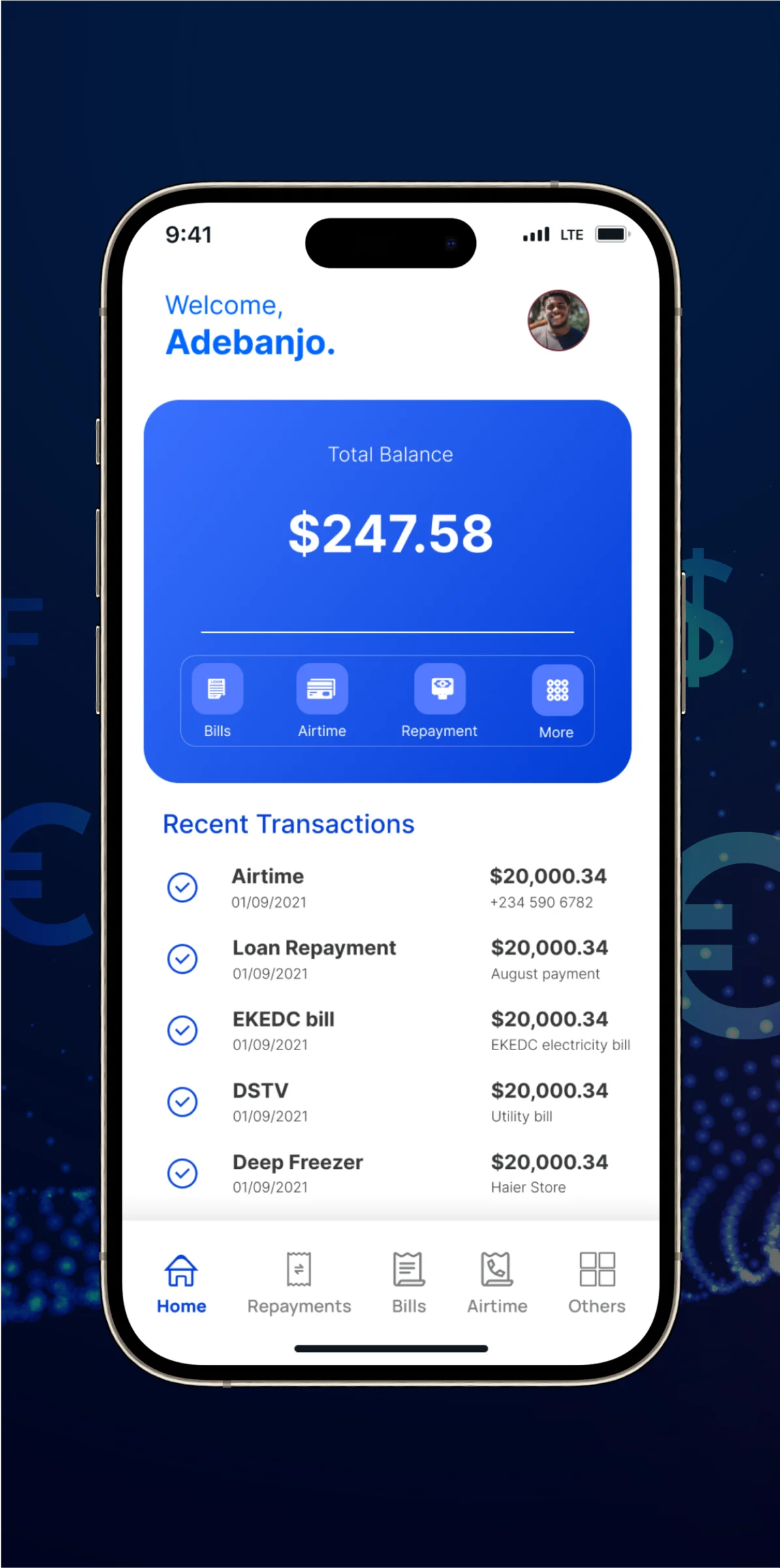
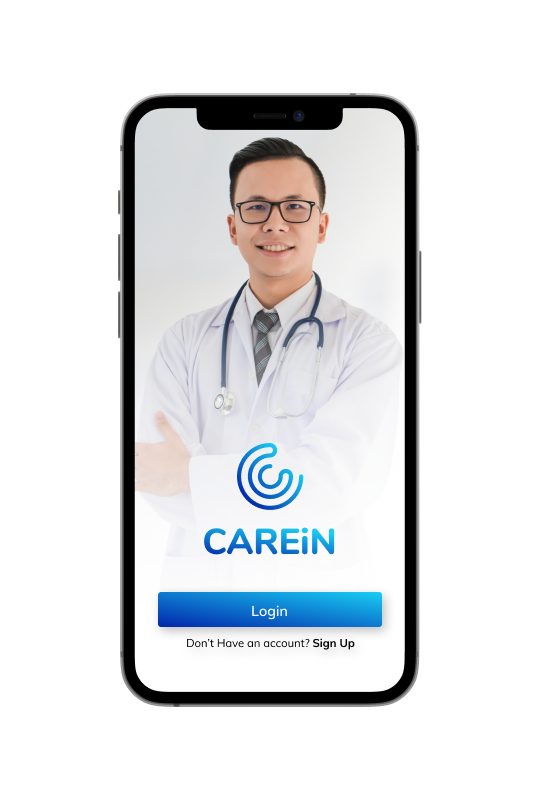
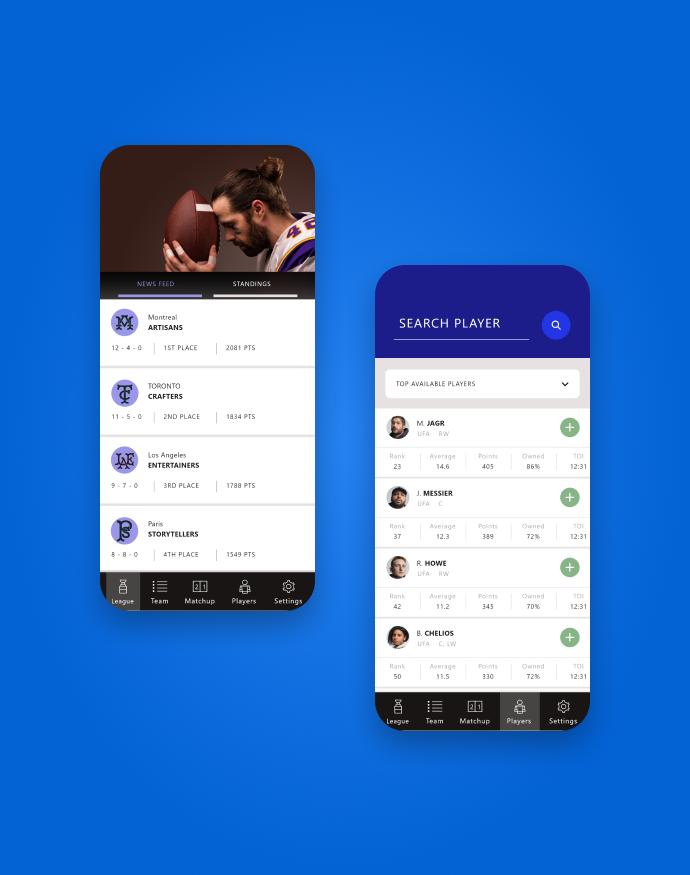



Pallavi Narang